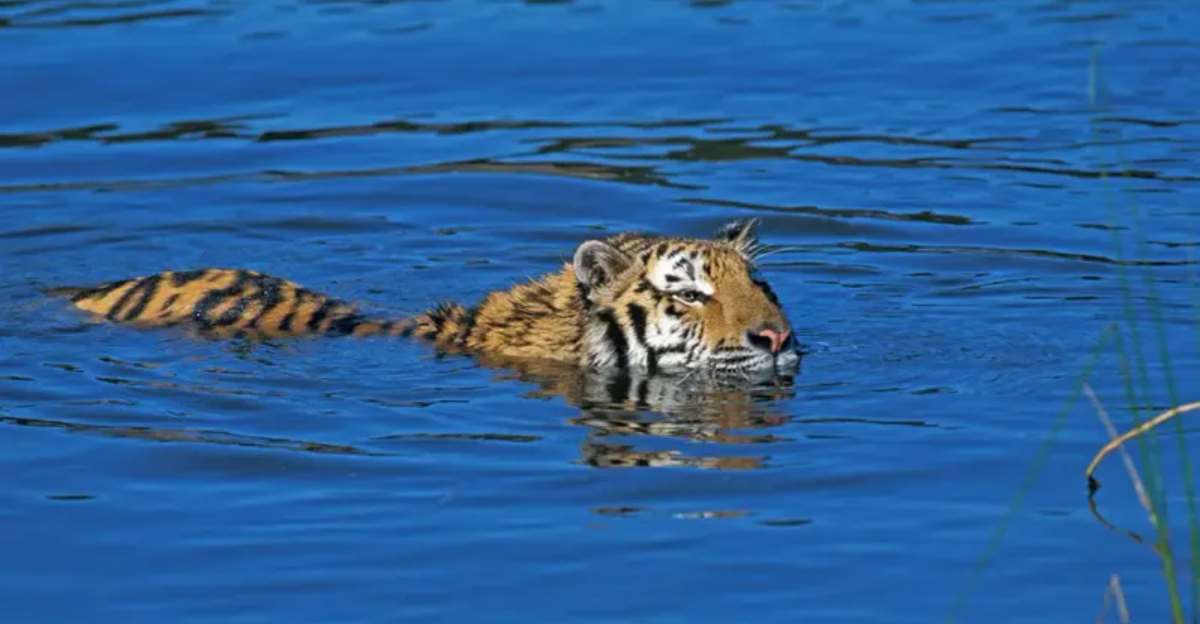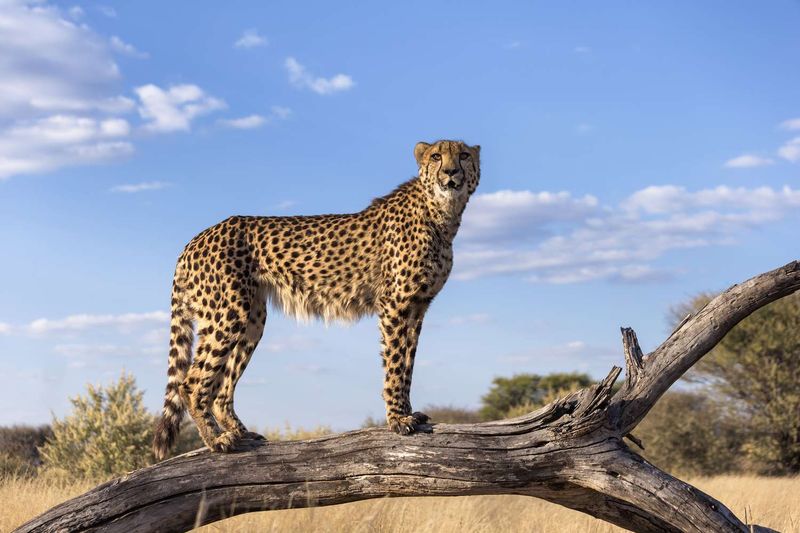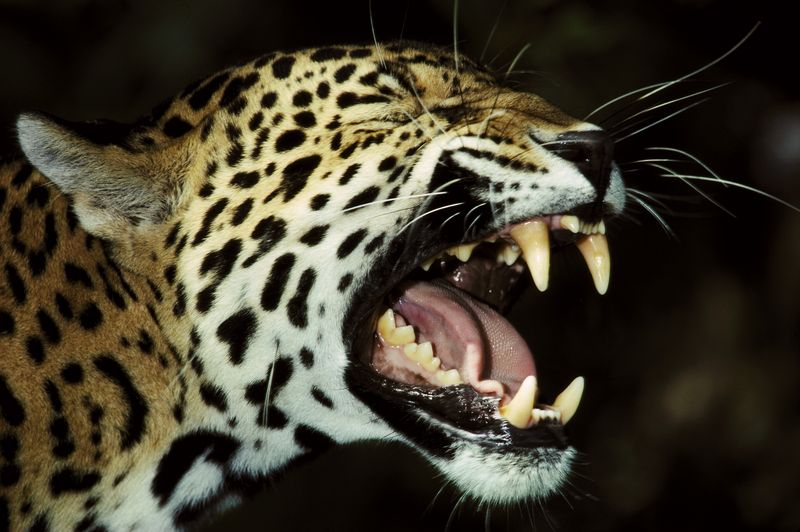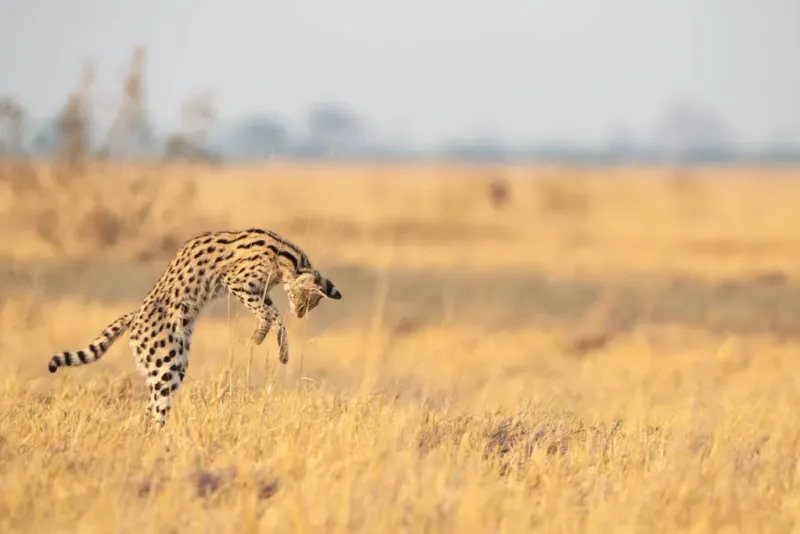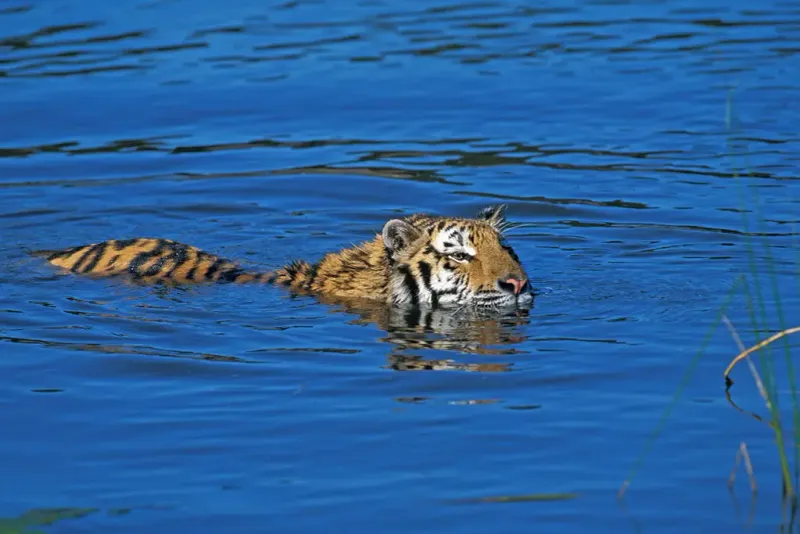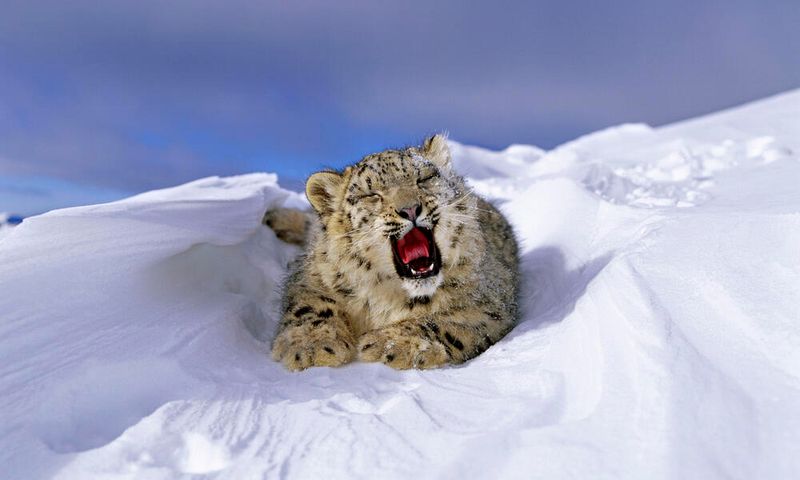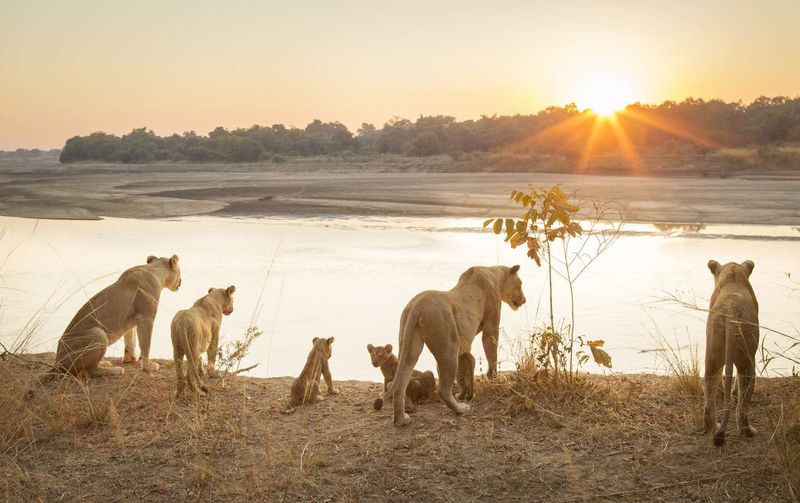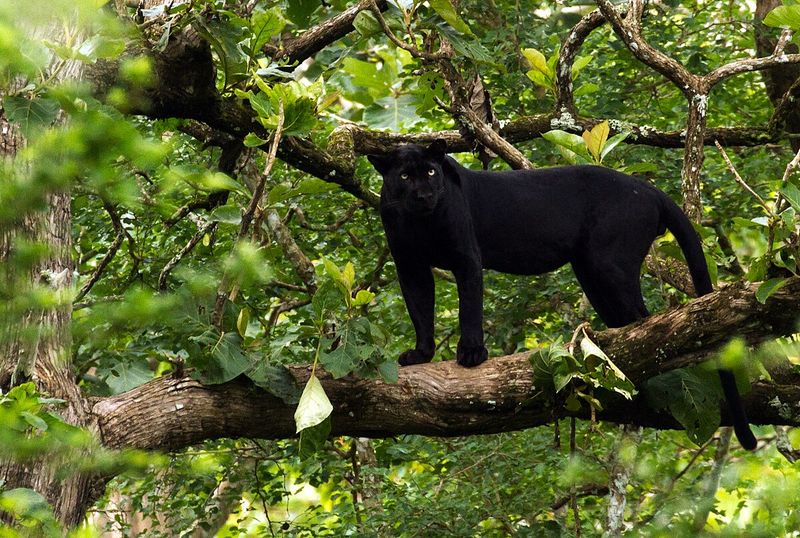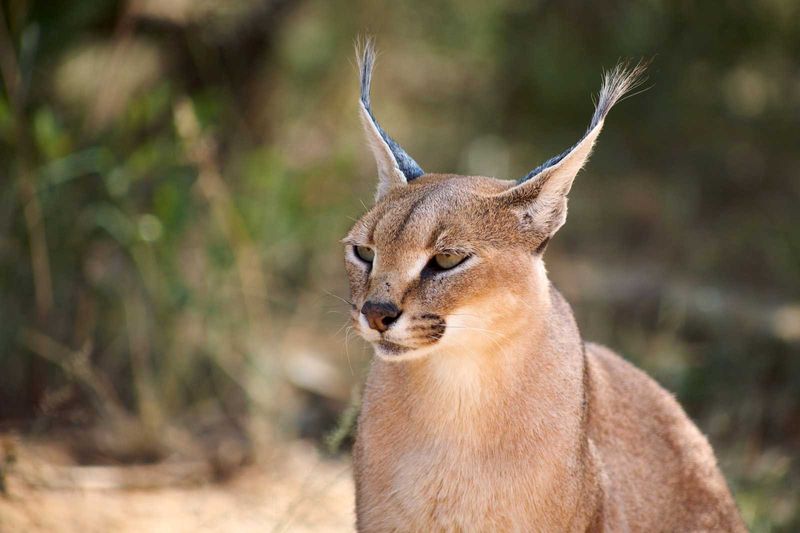📖 Table of Content:
- 1. Cheetahs Can’t Roar—But They Can Meow and Purr
- 2. Jaguars Have the Most Powerful Bite of Any Big Cat
- 3. Servals Can Jump Over 10 Feet High—From a Standstill
- 4. Tigers Are Expert Swimmers
- 5. Snow Leopards Can’t Roar—But They Can Chuff
- 6. Lions Are the Only Truly Social Big Cats
- 7. The Black Panther Is Not a Separate Species
- 8. Caracals Use Their Ears to Communicate
At first glance, wild cats might seem like sleek, familiar versions of your household feline—but behind their mystique lies a world of unbelievable truths. From physical feats that defy logic to quirky behaviors that sound like fiction, these animals continue to surprise scientists and wildlife enthusiasts alike. Whether prowling dense jungles, soaring through the savannas, or disappearing into snowy mountain slopes, each species has evolved in bizarre and fascinating ways that challenge what we think we know about the animal kingdom.
The wild cat family, which includes over 40 species, showcases an astonishing diversity in skills, adaptations, and lifestyles. While we often spotlight lions, tigers, and cheetahs, lesser-known species such as servals and caracals also deserve the spotlight for their incredible and often overlooked traits. These creatures don’t just hunt and survive—they do so with a flair that borders on the supernatural.
What follows are eight facts that are so mind-blowing, they might sound like viral myths or tall tales at first read. But rest assured, each one is backed by science, field observation, and wildlife experts. As you read, prepare to reevaluate what you thought you knew about nature’s most iconic predators. The truth, in this case, is wilder than fiction. So let’s explore the awe-inspiring realities of the world’s wildest felines—one unbelievable fact at a time.
1. Cheetahs Can’t Roar—But They Can Meow and Purr
Cheetahs break the mold when it comes to big cat communication. Unlike their roaring cousins, they lack the specialized throat anatomy that enables the iconic roar of lions or tigers. Instead, cheetahs produce an array of surprisingly domestic sounds such as meows, chirps, and purrs. Their chirping, often described as birdlike, is especially unique and is used to locate cubs or signal distress. During social interactions, they may purr continuously, similar to a content house cat. These sounds might seem comical coming from such a fast and elegant predator, but they serve important social and survival functions. This softer vocal range makes cheetahs acoustically distinct among their wild cousins.
2. Jaguars Have the Most Powerful Bite of Any Big Cat
Power, precision, and bone-crushing strength define the jaguar’s bite. With jaw pressure clocking in at around 2,000 pounds per square inch, this cat can deliver a lethal bite that few animals on Earth can match. While lions and tigers typically go for the throat, jaguars go straight for the skull, piercing directly through bone to deliver a fatal blow to the brain. This technique allows them to hunt armored prey like caimans and turtles, making their diet one of the most varied among big cats. Their muscular build and short, stocky limbs add to their forceful takedowns. These adaptations allow jaguars to thrive in dense forests and riverine environments where stealth and power dominate over speed. Even among apex predators, the jaguar’s kill strategy is uniquely brutal and effective.
3. Servals Can Jump Over 10 Feet High—From a Standstill
Precision and elevation are the serval’s greatest hunting tools. Native to Africa’s grassy wetlands, this lanky feline is known for its oversized ears and remarkable jumping ability. Without a running start, servals can leap over 10 feet vertically to snag birds right out of the sky. Their long legs and flexible spines act like natural springs, giving them astonishing vertical lift. In addition to jumping, servals have a near-perfect strike rate thanks to their keen hearing and stealthy approach. This combination of athleticism and sensory precision makes them one of the most successful small predators in Africa. Watching a serval in action is like witnessing a real-life superhero moment from the animal world.
4. Tigers Are Expert Swimmers
Contrary to the widely held belief that cats hate water, tigers embrace it—sometimes literally. These solitary hunters are not only comfortable in aquatic environments but are also capable of swimming several miles at a stretch. Tigers have been observed crossing wide rivers, even lakes, with calm and powerful strokes, often using waterways as travel routes. This fondness for water allows them to cool off in hot climates and even ambush prey near riverbanks. Their muscular build, large webbed paws, and dense coats all contribute to their aquatic prowess. In places like the Sundarbans of India and Bangladesh, tigers are often seen swimming between islands in search of food or territory. Their relationship with water sets them apart in the feline world, both behaviorally and ecologically.
5. Snow Leopards Can’t Roar—But They Can Chuff
Soft-spoken but formidable, the snow leopard communicates in ways that don’t include the dramatic roars we associate with big cats. Adapted to the high, silent peaks of Central and South Asia, these elusive animals have developed a low, breathy vocalization called a “chuff.” Used primarily for greeting and reassurance, chuffing serves as a gentle way to communicate with cubs or mates. The structure of their vocal cords doesn’t allow for true roaring, which might actually be an advantage in their quiet alpine habitats. In addition to chuffing, snow leopards rely heavily on scent marking and body language. This subtle communication style helps them remain stealthy and elusive in a harsh environment. While they may be the most ghostlike of the big cats, their social signals are surprisingly rich and expressive.
6. Lions Are the Only Truly Social Big Cats
Few people realize that lions are the only wild cats that form structured social groups. These “prides” typically consist of related lionesses, their cubs, and one to three dominant males who guard and mate with the females. Within the pride, roles are clearly defined: females do most of the hunting, while males defend the territory from rivals. This cooperation increases the pride’s survival and hunting efficiency, especially when tackling large prey like buffalo. Cubs benefit from communal care, often being nursed by multiple females. Despite occasional internal competition, this complex social system gives lions a unique evolutionary edge. No other big cat has developed this level of group cohesion or collective strategy.
7. The Black Panther Is Not a Separate Species
Often shrouded in myth, the black panther isn’t a distinct species but rather a genetic variation. Both leopards in Asia and Africa, and jaguars in the Americas, can exhibit a condition called melanism, which gives their coats an inky black appearance. This coloration comes from a surplus of dark pigment, but their signature rosette markings are still visible in the right lighting. Melanism can offer advantages in dense forest habitats by providing better camouflage during nocturnal hunts. The term “black panther” is more cultural than biological, often used to add mystique to these already elusive predators. Despite their mysterious reputation, black panthers are genetically identical to their non-melanistic counterparts. Understanding this helps demystify one of the most misunderstood creatures in the animal kingdom.
8. Caracals Use Their Ears to Communicate
Nature didn’t give the caracal those dramatic, tufted ears just for flair—they serve a purpose beyond aesthetics. The black tufts atop each ear can be moved independently and are thought to play a role in signaling mood or alerting others. Observations in the wild suggest that the position and movement of these tufts may help caracals communicate silently with mates or young. Their ear-based communication is especially useful in the quiet, open landscapes they often inhabit. In addition to sending signals, the ears are also highly sensitive, capable of pinpointing the faintest rustle of prey in tall grass. Caracals are known for their stealth, and their body language—including ear gestures—adds a whole new dimension to their interactions. It’s a subtle, elegant form of communication perfectly suited to a silent hunter.
